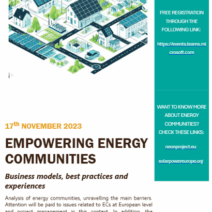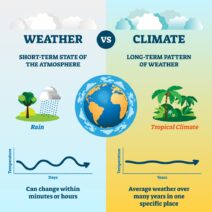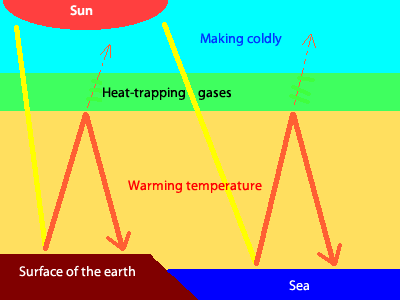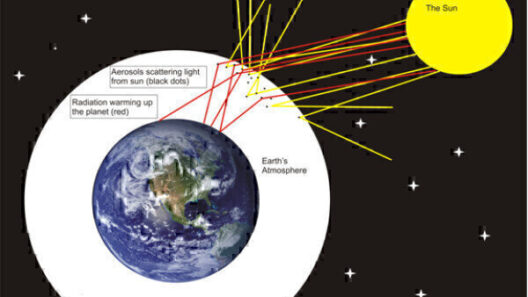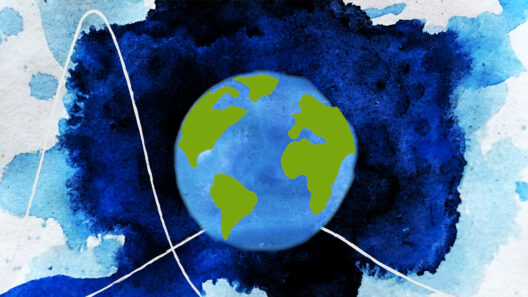Global warming is an overarching phenomenon impacting various regions across the globe, eliciting profound changes in climatic patterns and ecosystems. It is a term frequently invoked, yet the intricacies of its occurrence, as well as the geographic dispersion of its effects, merit thorough examination. Specifically, the manifestation of global warming is not uniform; it varies in intensity and impact depending on geographical, environmental, and socioeconomic factors.
One of the primary observations regarding global warming is that it is not isolated to a specific region; rather, it permeates the atmosphere of the entire planet. Nevertheless, areas such as the Arctic are experiencing accelerated warming, a phenomenon known as Arctic amplification. The amplification stems from a combination of atmospheric and climatic changes, wherein the loss of reflective ice cover catalyzes further warming, leading to a vicious cycle. As ice melts, less sunlight is reflected back into space, resulting in increased absorption of solar energy by the ocean. This exacerbates temperature increases, which then contributes to further ice loss.
Many coastal regions also face imminent dangers due to global warming. As global temperatures rise, polar ice caps and glaciers melt, culminating in elevated sea levels. Low-lying nations, particularly in the Pacific, such as the Maldives and Tuvalu, confront existential threats as their land diminishes. The encroachment of saltwater into freshwater systems disrupts agricultural viability and depletes drinking water sources, presenting severe challenges to local populations. Urban areas such as New Orleans and Miami, which are situated on vulnerable coastlines, are also facing increased flooding, necessitating costly infrastructure adaptations.
The geographic disparities in global warming effects are further exacerbated by the varying capacities of regions to cope with climatic changes. Wealthier nations often possess more robust infrastructure, better healthcare systems, and greater economic resilience, allowing them to adapt and mitigate some of the impacts of climate change. In stark contrast, developing nations, which may not only lack the financial resources but also face heightened exposure to the effects of climate change, suffer severe consequences that can stall development efforts. This creates a paradox where the same global phenomenon affects diverse populations in drastically different manners.
It is also crucial to examine the role of natural phenomena in the global warming narrative. Changes in land use, deforestation, and industrialization have substantially contributed to the rise in greenhouse gases. Regions that historically functioned as carbon sinks, such as forests and wetlands, are supplanted by agriculture and urban expansion. This shift not only compromises the ability of natural ecosystems to sequester carbon but also enhances the atmospheric concentration of carbon dioxide and methane. Consequently, some areas become more vulnerable to extreme weather events, including hurricanes, droughts, and wildfires, which are further intensified by climate change.
Weather extremes are increasingly common nationwide. For instance, prolonged heat waves in regions like the southwestern United States are becoming more frequent and severe, exacerbating droughts and intensifying wildfires. Meanwhile, northeastern areas are grappling with heavier precipitation and flooding. These erratic weather patterns illustrate a broader trend of climatic shifting, as global warming adjusts the natural rhythms that define local environments and agricultural cycles.
Moreover, an underlying aspect of global disparities in warming is the temporality of climate responsiveness. The lag effect of climate change often means that the consequences of past greenhouse gas emissions manifest long after they were emitted. Consequently, regions that were once relatively unaffected may suddenly face acute challenges as climatic feedback loops initiate. This temporal disconnect can lead to significant unpredictability in how different areas will respond to ongoing carbon emissions today.
Fascination with Global Warming
Humans have an intrinsic fascination with climate, driven by their dependency on the natural world. As we observe changes in our environment—a shift in seasons, the increasing frequency of extreme weather, or the encroachment of the ocean—questions arise about the underlying causes. The science of climate change holds a magnetic allure, drawing attention to the intricate interplay of carbon cycles, solar radiation, and ocean currents. The pursuit of knowledge regarding these connections is not just academic; it reflects a deep-seated desire to comprehend and potentially influence our collective trajectory.
Through scientific inquiry, we uncover the profound implications of our behaviors on atmospheric conditions. The realization that human activities contribute significantly to elevated greenhouse gas concentrations forms the crux of global warming’s narrative. This burgeoning awareness fosters a sense of urgency, prompting discussions around mitigation strategies, alternative energy sources, and sustainable practices. Above all, it signifies a critical juncture in human history—a moment for introspection regarding our stewardship of the planet.
In conclusion, global warming is a complex, multifaceted phenomenon with localized effects, driven by a series of intertwining natural and anthropogenic factors. Its varied manifestations across different regions highlight the need for comprehensive strategies that address both adaptation and mitigation. Recognizing the urgency of the climate crisis demands a collective response that transcends national borders, as the consequences of inaction will invariably compound, regardless of geographic location. Understanding where global warming happens—and why—ultimately compels humanity to alter its course, striving for a sustainable future where survival and thriving can coexist in harmony with the Earth’s ecosystems.
